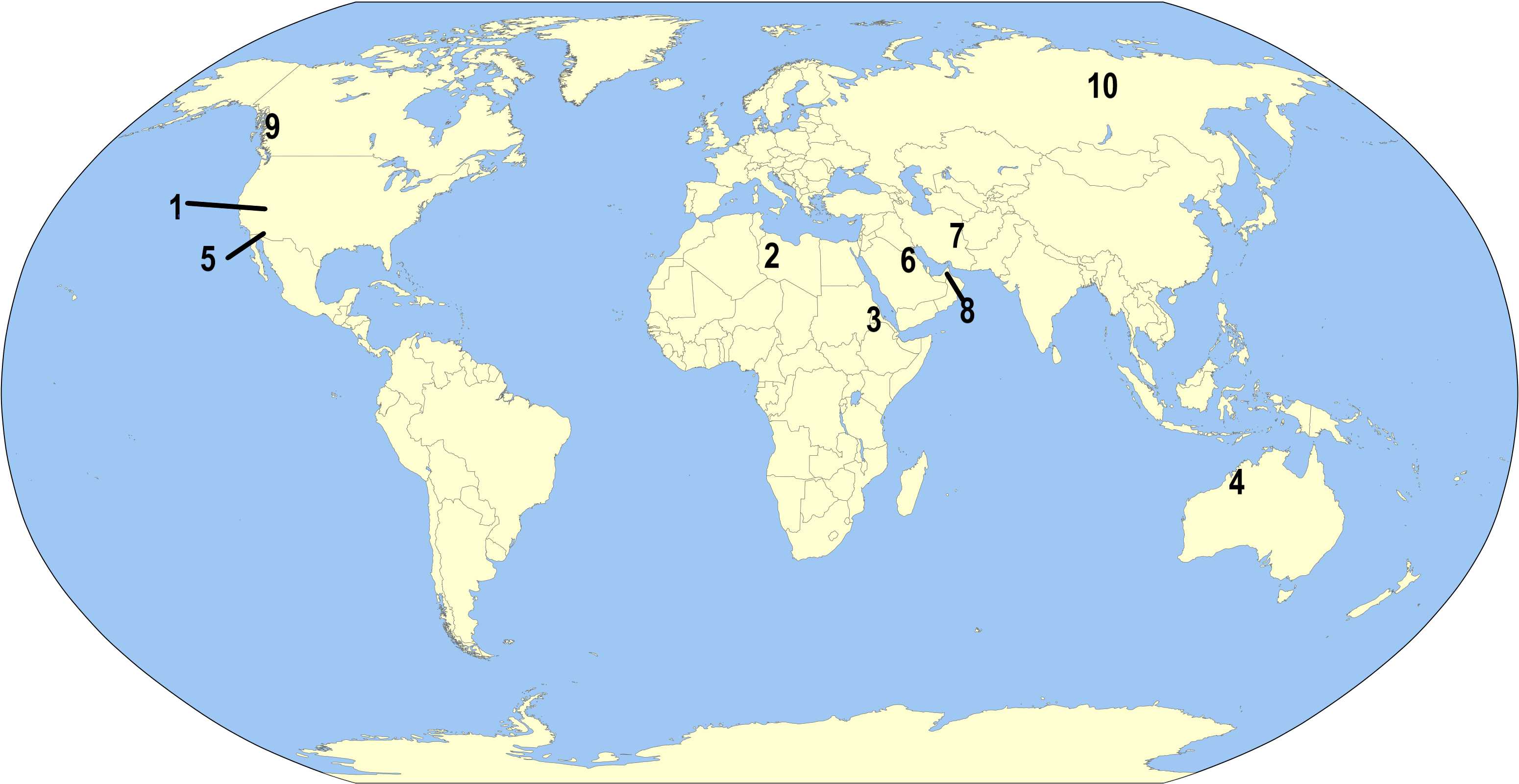
In the Heat of the Night Trivia Quiz
How Hot Can It Get?
Decades before global warming became a pressing issue, heat-related records were being set in various parts of the world. The records in this quiz date from the late 19th century to the end of 2024. Can you find them on the map without getting burned?
A label quiz
by LadyNym.
Estimated time: 3 mins.
- Home
- »
- Quizzes
- »
- Science Trivia
- »
- Weather
- »
- Extreme Weather
